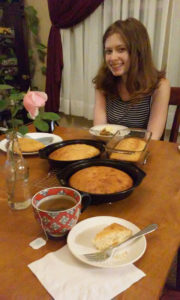Historical baking
MG-360: Paul A. Mueller, Jr. Collection
written by Elizabeth McIlhenney, Archives Volunteer
The Paul A. Mueller, Jr. Collection is a collection of family heirlooms passed down from generation to generation in the Zahm, Shreiner, and Cochran families, from the years 1774 to 1916. The collection features many interesting pieces that are of historical value, such as a deed on parchment from 1774, civil war letters from 1862 and 1863, stock books for the New Process Steel Company, a valentine from one sweetheart to another, and a family cookbook.
The family cookbook was passed down from generation to generation, started in the early 1800s and added to for years afterwards. While many of the recipes are no longer legible due to the fact that they were written in pencil, other recipes were written in ink and are still readable. However, there are other challenges with using some of these recipes today. Some of the earlier recipes have ingredients that would be unfamiliar to the modern baker, such as “Hearts Horn.” Made from a male deer’s antlers, hart’s horn, it is also known as ammonium carbonate or baker’s ammonia and can still be found today in specialty stores or online. The ingredient can also be substituted with baking soda, however hartshorn was used to give cookies or cake a fluffier texture that baking soda did not. It is still used in German baking today.
Another interesting detail in the cookbook are the amounts used to measure out the ingredients. Instead of using volume (cups) as a unit of measurement as American home cooks do today, many of the earlier recipes specify ingredients by weight (pounds), as Europeans and professional bakers do today. A traditional Pound Cake recipe would have called for one pound each of butter, sugar, eggs and flour. This must have changed, however, as a later recipe in the cookbook, for Cream Cake, starts with “3 tincups of flour, 1 tincup of sour cream…”
Many of the recipes were written in pencil and have faded to illegibility. Others were splashed by the cook leaving some parts are unreadable.
Many of the recipes in the cookbook are still usable today, however, and one such recipe is the French Tea Cake! Here is the recipe:
1 cup of sugar
1 cup of thick milk
2 cups of flour
A “small lump” of butter
2 eggs
1 teaspoon cream of tartar
Half a teaspoon of baking soda
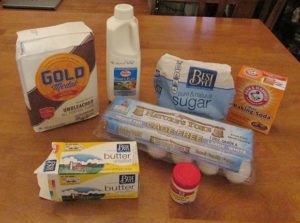
My mother and I decided to try this recipe. Since the original recipe came with no instructions, however, this is what we did and the cakes turned out quite well!
We preheated the oven to 350 degrees. We added the dry ingredients to a large mixing bowl first, then fluffed the mixture with a fork to mimic the action of sifting (so as to incorporate more air to make the cake fluffier).
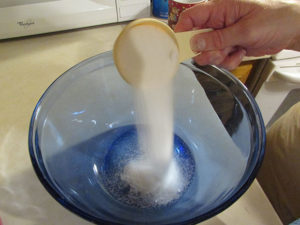
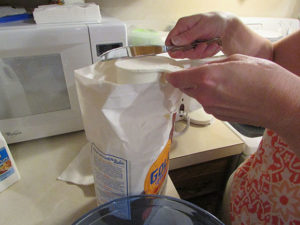
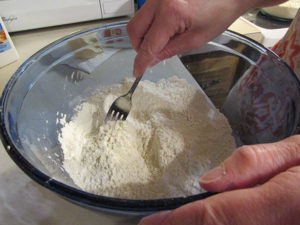
After the dry ingredients were mixed well, we added the buttermilk, eggs, and softened butter, and mixed the batter until the consistency was smooth.
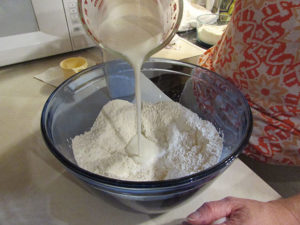
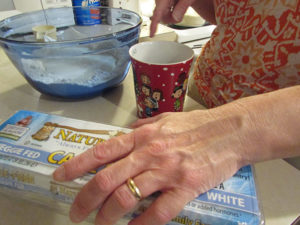
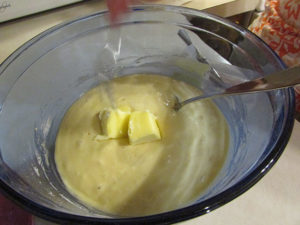
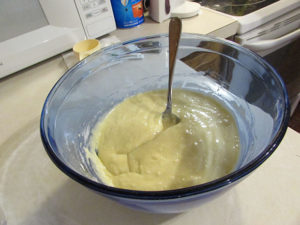
Then, we poured the batter into buttered baking pans. According to some quick internet research, a pie plate probably would have used back then. We chose to use two low round cake pans instead.
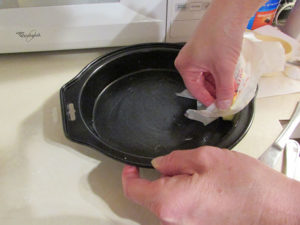
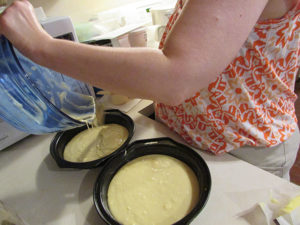
We put the pans in the oven for about 40 minutes, or until the cakes were golden brown and set. While the cakes were baking, the kitchen was filled with an aroma that reminded me of sugar cookies or sugar cake. The scent of the cakes definitely made us anticipate their coming out of the oven.
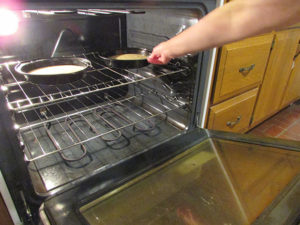
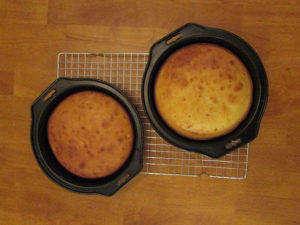
To test whether the cake was baked enough, we inserted a knife to the center of the cake and if it came out clean after a couple of seconds. When we made sure the cakes were done baking, we took them out of the oven and put them on a cooling rack. They turned out to be delicious! The cake does have a milder flavor than we are used to today, but I think that the more subdued sweetness is really quite pleasant. My mom enjoyed a cup of peppermint tea with hers, but I also think that any flavor of tea would pair nicely with this treat! We made a couple of cakes so that I could bring some in for the staff and volunteers at LancasterHistory.org to try, and they all enjoyed the cake as well.
If you try this recipe, once you put the cakes out to cool, put a pot of tea on the stove. Enjoy a slice of cake with your tea, courtesy of the Paul A. Mueller Collection!
